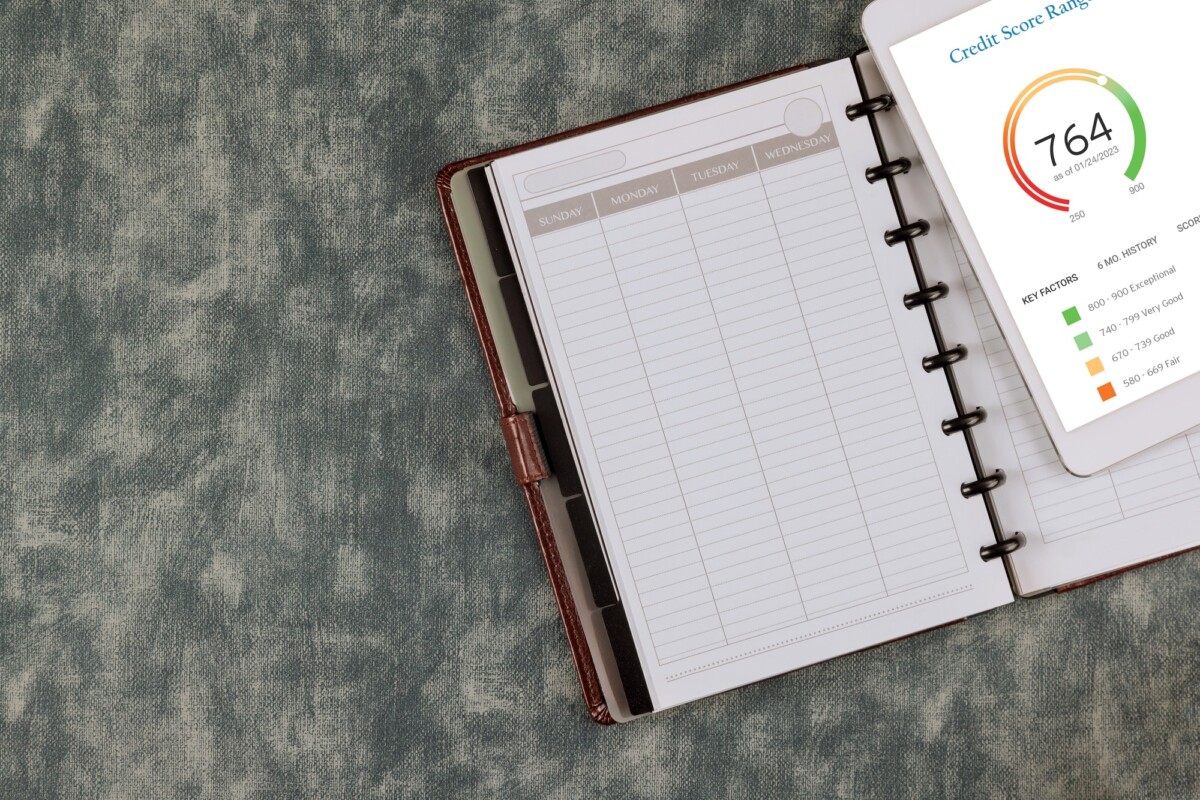The Trusted Choice for Cash Loans
Request Your Cash Advance or Personal Loan Now
The Trusted Choice for Cash Loans
Submit your information today!
Get lender-approved in as fast as 5 min!
Receive a decision as soon as the next business day!
Fast Funding
Get money as soon as the next business day

DTI for Personal Loan: Key to Loan Approval
Understanding Debt-to-Income Ratio (DTI)
Understanding Debt-to-Income Ratio (DTI) is crucial when considering a personal loan. The DTI for personal loan measures how much of your income goes towards paying debts. Lenders use this ratio to assess your ability to manage monthly payments and repay borrowed money. A lower DTI indicates a healthier balance between debt and income, making you a more attractive borrower. To calculate your DTI, divide your total monthly debt payments by your gross monthly income, then multiply by 100 to get a percentage.
A good DTI for personal loan approval is typically below 36%, but each lender has its criteria. By keeping your DTI low, you increase your chances of securing a loan with favorable terms. If your DTI is high, consider paying down existing debts or increasing your income before applying. Understanding and managing your DTI not only helps in getting a personal loan but also ensures better financial health. So, keep an eye on your DTI and take control of your financial future with confidence!
Importance of DTI in Personal Loan Applications
Understanding the importance of DTI for personal loan applications can make a big difference in your financial journey. DTI, or Debt-to-Income ratio, measures how much of your income goes toward debt payments. Lenders use this ratio to determine if you can handle more debt. A lower DTI shows you manage your debt well, which boosts your chances of loan approval. Keeping your DTI in check can open doors to better loan terms and interest rates. Why is DTI so crucial when applying for a personal loan? It’s simple! Lenders want to ensure you can repay the loan without financial strain.
A high DTI might signal potential risk, making lenders hesitant. On the other hand, a low DTI indicates financial stability. This reassures lenders, increasing your approval odds. So, managing your DTI for personal loan applications is key to securing favorable loan conditions. Monitoring your DTI for personal loan applications is essential. It helps you understand your financial health better. Plus, it positions you as a reliable borrower in the eyes of lenders.
How to Calculate Your DTI for a Personal Loan
Calculating your DTI for a personal loan is easier than you might think! Start by listing all your monthly debt payments. This includes your mortgage, car loans, credit card payments, and any other recurring debts. Add these amounts together to get your total monthly debt. Next, figure out your gross monthly income, which is your total income before taxes and other deductions. This can include your salary, bonuses, and any other sources of income. Now, divide your total monthly debt by your gross monthly income.
Multiply the result by 100 to get your DTI percentage. For example, if your total monthly debt is $1,500 and your gross monthly income is $5,000, your DTI for a personal loan would be 30%. Lenders typically look for a DTI below 40%, so aim to keep yours in a healthy range. Knowing your DTI helps you understand your financial health and improve your chances of getting approved for a personal loan. Remember, a lower DTI for a personal loan boosts your approval chances. Keep track of your finances and stay informed!
Ideal DTI Ratios for Personal Loan Approval
When applying for a personal loan, understanding your Debt-to-Income (DTI) ratio is crucial. Lenders use the DTI for personal loan decisions to gauge your ability to manage monthly payments and repay borrowed funds. Ideally, a DTI ratio of 35% or lower is considered favorable. This means your monthly debt payments should be no more than 35% of your gross monthly income. A lower DTI ratio not only increases your chances of approval but also might secure you better loan terms. If your DTI ratio is above 50%, lenders may view you as a higher risk.
To improve your DTI for personal loan approval, consider paying down existing debts or increasing your income. By taking these steps, you can present a stronger application and achieve your financial goals with ease. Remember, maintaining a healthy DTI ratio is key to financial stability. Regularly review your finances and adjust your spending habits as needed. This proactive approach can help you stay on track and improve your chances of securing a personal loan when you need it.
Factors Influencing Your DTI
Several factors influence your DTI for personal loan applications. First, your monthly income plays a crucial role. Lenders assess how much you earn to determine your ability to repay the loan. Higher income usually means a better DTI ratio. Second, your existing debts impact your DTI. If you have multiple loans or credit card balances, your DTI ratio may increase, making it harder to qualify for a new loan. Your spending habits also affect your DTI for personal loan approval. Consistent and high expenses can raise your DTI ratio.
Reducing unnecessary expenditures can improve your chances. Lastly, the type of loan you seek matters. Some loans have stricter DTI requirements. Understanding these factors can help you manage your finances better and secure a personal loan with ease. Lenders also consider your credit history when evaluating your DTI for personal loan approval. A good credit score can positively influence your DTI ratio. On the other hand, a poor credit score might raise concerns about your ability to repay the loan.
Ways to Improve Your DTI Before Applying for a Personal Loan
Improving your DTI for personal loan applications can be a game-changer. Start by paying down existing debts. Focus on high-interest debts first. This will reduce your monthly obligations. Another effective strategy is to increase your income. Consider taking on a part-time job or freelance work. Even small boosts in income can make a big difference. Remember, the goal is to lower your debt-to-income ratio as much as possible. Another way to improve your DTI for personal loan eligibility is to avoid taking on new debt.
Hold off on large purchases and new credit lines. This shows lenders you are financially responsible. Also, review your credit report regularly. Correct any errors that might be inflating your debt. Finally, create a budget and stick to it. This will help you manage your finances better and keep your DTI in check. By following these tips, you’ll be in a stronger position when applying for a personal loan. Consolidate your debts to simplify payments and lower interest rates. This can improve your DTI for personal loan applications.
DTI and Its Impact on Loan Interest Rates
Understanding DTI for personal loan applications is crucial when considering how it impacts loan interest rates. DTI, or Debt-to-Income ratio, measures your monthly debt payments against your gross monthly income. Lenders use this ratio to gauge your ability to manage additional debt. A lower DTI indicates a better balance between debt and income, which can lead to more favorable interest rates on personal loans. When your DTI for personal loan is low, lenders see you as a less risky borrower. This perception often results in lower interest rates, saving you money over the loan’s life.
Conversely, a high DTI suggests financial strain, leading to higher interest rates or even loan denial. Therefore, maintaining a healthy DTI is key to securing affordable personal loans. So, how can you improve your DTI for personal loan applications? Start by paying down existing debts and increasing your income if possible. Budgeting wisely and avoiding unnecessary expenses can also help. These steps will not only improve your DTI but also enhance your financial health overall.
Common Mistakes to Avoid When Managing Your DTI
Managing your Debt-to-Income (DTI) ratio can feel like a balancing act, but avoiding common mistakes can make the process much smoother. One frequent error is not keeping track of all your debts. It’s easy to forget about smaller loans or credit card balances, but they add up quickly. Always list every debt to get a clear picture of your DTI for personal loan applications. Another mistake is taking on new debt without considering its impact on your DTI. Before you sign up for that new credit card or loan, calculate how it will affect your overall ratio. Another pitfall to avoid is neglecting to pay down high-interest debt first.
High-interest debts can balloon quickly and skew your DTI for personal loan calculations. Prioritize paying these off to improve your ratio faster. Additionally, don’t ignore the importance of increasing your income. Sometimes, focusing solely on reducing debt isn’t enough. Look for ways to boost your earnings, whether through a side hustle or asking for a raise. By avoiding these common mistakes, you can better manage your DTI and increase your chances of loan approval.
How Lenders Use DTI to Assess Loan Risk
Lenders use the Debt-to-Income (DTI) ratio to gauge the risk of lending money to applicants. Essentially, DTI for personal loan applications helps lenders understand how much of your income goes toward debt repayment. A lower DTI suggests you have a good balance between debt and income, making you a less risky borrower. This means you are more likely to get approved for a loan with favorable terms. On the flip side, a high DTI indicates you might struggle to manage additional debt. Lenders see this as a red flag, as it could mean you are over-leveraged.
They may either deny your application or offer a loan with higher interest rates to mitigate their risk. By keeping your DTI for personal loan applications low, you boost your chances of securing the loan you need with better conditions. To improve your DTI for personal loan approval, focus on paying down existing debts. Additionally, consider increasing your income through side gigs or promotions. These steps can make a significant difference in your loan application success.
Case Studies: DTI in Real-life Personal Loan Scenarios
Let’s dive into some real-life scenarios to see how DTI for personal loan applications plays out. Meet Sarah, a young professional with a stable job. She wants to renovate her home and needs a personal loan. Her Debt-to-Income Ratio (DTI) stands at 25%. This low DTI makes her an attractive candidate for lenders, who see her as low-risk. Sarah’s loan gets approved quickly, and she can start her home renovation project without any hassle. Now, let’s consider John, a recent college graduate.
John has student loans and a car loan, which pushes his DTI to 45%. He applies for a personal loan to consolidate his debts. Due to his higher DTI, lenders view him as a higher risk. However, by providing a detailed plan to manage his finances and demonstrating a steady income, John still secures a loan, albeit with a slightly higher interest rate. These case studies show how understanding and managing your DTI for personal loan applications can make a significant difference. DTI for personal loan applications is crucial.
Conclusion: Managing Your DTI for Better Loan Opportunities
Conclusion: Managing Your DTI for Better Loan Opportunities Managing your DTI for personal loan approval can open doors to better financial opportunities. By keeping your debt-to-income ratio in check, you not only improve your chances of securing a loan but also enhance your overall financial health. Start by tracking your expenses and cutting down on unnecessary costs. Paying off existing debts can also significantly lower your DTI, making you a more attractive borrower to lenders. Remember, a lower DTI means more room for financial growth and stability. It’s a win-win situation!
So, take charge of your finances today and watch as new loan opportunities come your way. With a little effort and discipline, you can manage your DTI effectively and achieve your financial goals. Happy loan hunting! Additionally, leveraging tools like budgeting apps can help you monitor and manage your DTI for personal loan applications. These tools offer insights into your spending habits, making it easier to identify areas for improvement. Stay proactive, and you’ll be on the path to financial success in no time!
Choosing ExpressCash means opting for a personal loan experience that is fast, flexible, and focused on your needs.




